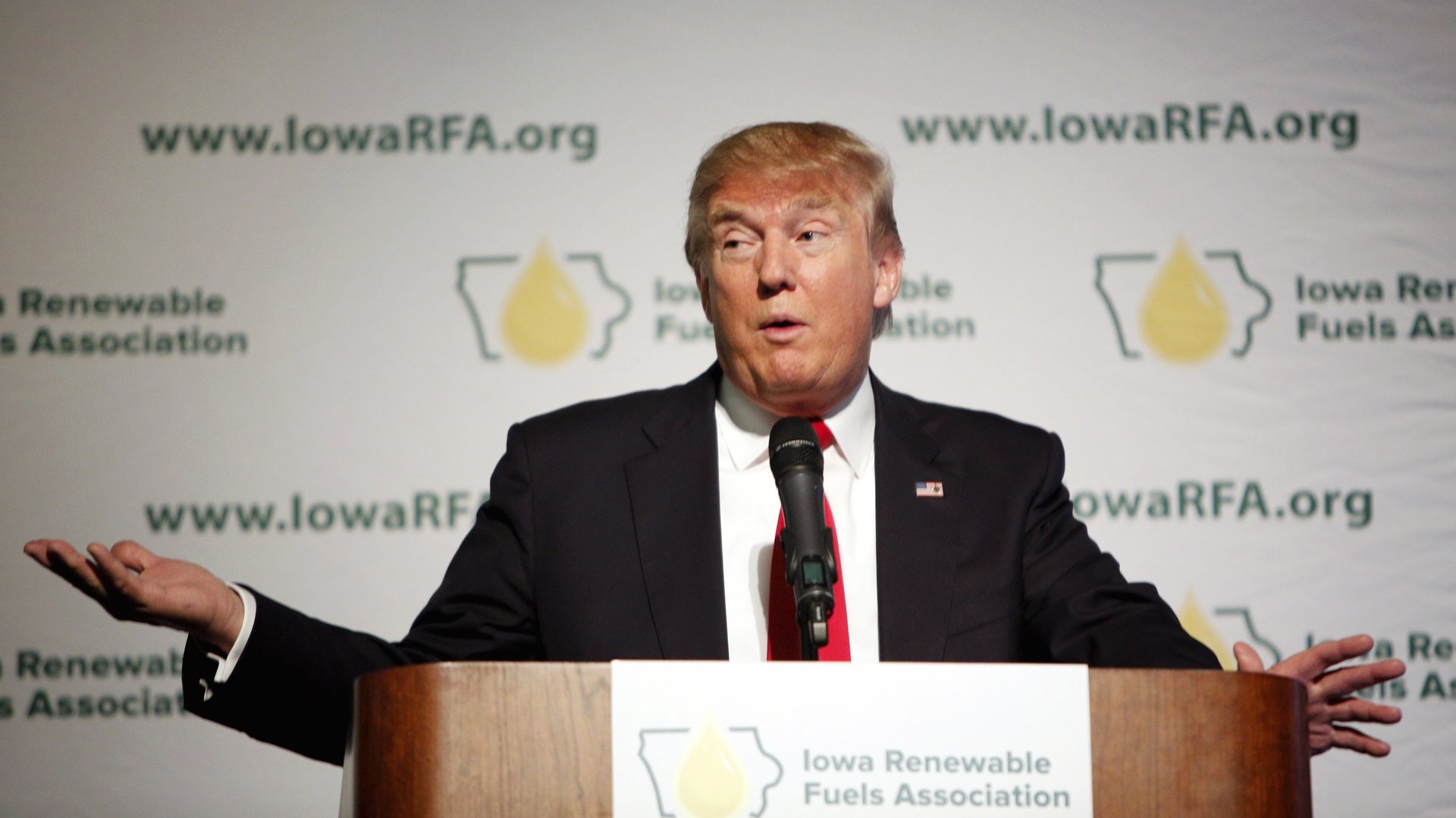Don’t believe the hype—polling in Iowa is “notoriously terrible”
Polling in Iowa, the first state to vote in the US presidential primaries, is driving American political conversation but may be missing the real story.


Polling in Iowa, the first state to vote in the US presidential primaries, is driving American political conversation but may be missing the real story.
A new poll conducted by CNN and the market researchers ORC shows Donald Trump with an 11 percentage point lead in support from Iowa Republicans over Texas senator Ted Cruz, his chief rival for the GOP presidential nomination. The same poll reports that Vermont senator Bernie Sanders leads former secretary of state Hillary Clinton by eight points in the hunt for the Democratic nomination. As recently as Jan. 18, Clinton was five points ahead.
But eleven days away from the Iowa caucus, polls can still be deceiving. At this point in 2012, former US representative Ron Paul was polling at the top of the GOP pack, though former Pennsylvania senator Rick Santorum would go on to win the caucus. (Neither would ultimately receive the Republican nomination.)
This most recent poll could be misleading due to CNN’s particular methodology. FiveThirtyEight’s Nate Silver pointed out in a series of tweets that the poll implies more than 300,000 voters will cast ballots in the Iowa caucus. Last election cycle, the number was less than half that (121,503).
This is important because calculating for higher voter turnout generally boosts the numbers for Trump and Sanders. Both candidates poll higher than their top opponents among voters who might vote in the caucus; but tend to trail among those who have committed to going. “More maybe-voters showing up to vote means more support for Donald Trump,” writes The Washington Post’s Philip Bump. Likewise for Sanders.
This is a polling trend that hasn’t escaped political professionals, whose internal polling likely paints a different picture based on information drawn from daily voter contact. This CNN poll relies on telephone interviews with just 266 and 280 likely caucus-goers from the Republicans and Democrats, respectively; the campaigns will be contacting thousands each day through phone-banking and canvassing.
“Polling in Iowa is notoriously terrible,” Jim Margolis, the veteran Democratic ad man working on Clinton’s campaign, told Quartz in October. “In fact, a lot of the polls that are done in traditional ways in that state, you would have a turnout of a half-a-million people, based on what they are getting in response rate. In 2008, during the most intense Barack Obama-Hillary Clinton-John Edwards caucus, there were only 250,000 who turned out, and that was extraordinary. This year it might be 115,000 or 120,000 people who turn out.”